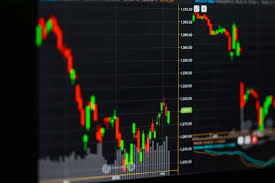Forex Trading Software Development A Comprehensive Guide 1729808579

In the rapidly evolving world of financial markets, forex trading has emerged as one of the most prominent spheres for traders worldwide. With trillions of dollars traded daily, the demand for efficient, reliable, and innovative forex trading software is at an all-time high. Forex trading software developers play a crucial role in this ecosystem, creating tools and platforms that empower traders to make informed decisions. For more insights, visit forex trading software developer Trading Vietnam.
The Significance of Forex Trading Software Development
Forex trading software encompasses a broad range of applications designed for executing, managing, and analyzing forex trades. As the forex market operates 24/5, traders require tools that can function seamlessly around the clock. The significance of forex trading software development lies in its ability to enhance trading efficiency, improve user experience, and integrate advanced analytics.
Types of Forex Trading Software
Forex trading software can be classified into several categories based on their functionality and purpose. Understanding these categories is essential for developers looking to create valuable tools for traders.
1. Trading Platforms
At the core of forex trading are trading platforms such as MetaTrader 4 (MT4), MetaTrader 5 (MT5), and cTrader. These platforms allow traders to execute trades, access charts, and implement trading strategies. A robust trading platform must offer exceptional speed, user-friendly interfaces, and customizable features to cater to different trading styles.
2. Expert Advisors (EAs)
Expert Advisors are automated trading systems that execute trades on behalf of the trader based on predefined criteria. Developers have the opportunity to create custom EAs that incorporate various trading strategies, from scalping to long-term investment. The flexibility in coding EAs provides significant advantages in terms of speed and efficiency.
3. Analysis Tools
Analytical tools are essential for forex traders who rely on market research to inform their trading decisions. This category includes charting software, technical analysis tools, and fundamental analysis indicators. Developers can create plugins or integrations that enhance existing trading platforms with advanced analytical capabilities.
4. Signal Generators
Signal generators provide traders with buy or sell signals based on various indicators and algorithms. Software developers can design systems that aggregate data from multiple sources and generate actionable insights for traders. These systems can operate independently or be integrated with existing trading platforms.
Key Technologies in Forex Trading Software Development
The development of forex trading software involves a variety of technologies and programming languages. Familiarity with these technologies is crucial for developers aiming to create competitive products.
1. Programming Languages
Most forex trading platforms and applications are developed using programming languages such as C++, Java, and Python. Each language offers unique benefits depending on the software requirements. For instance, C++ is known for its performance efficiency, while Python is favored for its simplicity and robust libraries for data analysis.
2. Application Programming Interfaces (APIs)

APIs play a significant role in forex trading software development, allowing different systems to communicate and work together. Many brokers provide APIs that developers can use to integrate features like market access, trade execution, and account management into their applications. Familiarity with RESTful APIs and WebSocket protocols is essential for developers.
3. Cloud Computing
Cloud technology is increasingly being utilized in forex trading software development, offering scalability and flexibility. By hosting applications in the cloud, developers can provide traders with real-time data access and collaborative features that enhance the trading experience.
4. Machine Learning and AI
Artificial intelligence and machine learning are transforming forex trading by enabling the analysis of vast data sets to improve predictive capabilities. Developers can leverage machine learning algorithms to build systems that learn from historical data and make intelligent trading decisions.
The Development Process
The development of forex trading software typically follows a structured process, ensuring that the final product meets the quality and performance expectations of its users.
1. Requirement Gathering
The first step in the development process involves gathering requirements from stakeholders, including traders, brokers, and financial institutions. It’s crucial to understand the problems that the software aims to solve and the features that users expect.
2. Design
Once requirements are gathered, the next step is to design the software architecture, user interface, and user experience. A well-thought-out design enhances usability and helps in acquiring users.
3. Development
The actual coding takes place during the development phase. Developers write the necessary code, implement algorithms, and integrate APIs to bring the software to life.
4. Testing
Thorough testing is essential to ensure that the software works as intended, is free of bugs, and provides a seamless user experience. Different testing methods, including unit testing, integration testing, and user acceptance testing, are employed.
5. Deployment and Maintenance
After testing, the software is deployed. Ongoing maintenance is necessary to keep the software up to date with market changes, regulatory requirements, and user feedback.
The Future of Forex Trading Software Development
The future of forex trading software development is bright, with ongoing advancements in technology and regulatory environments. As digital currencies and blockchain technology gain popularity, developers will need to adapt their offerings to include these innovations. Furthermore, the integration of AI and big data will continue to shape trading strategies and tools, making it essential for developers to stay ahead of the curve.
In conclusion, the role of forex trading software developers is pivotal in ensuring a sophisticated trading environment that benefits traders globally. With a keen understanding of the forex market, technological trends, and user needs, developers can create software that enhances trading experiences and ultimately improves profitability.

Leave a Reply
Want to join the discussion?Feel free to contribute!